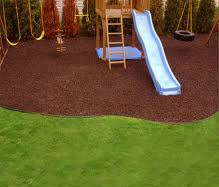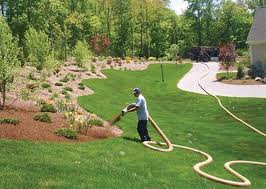Mulch gives your lawn a clean finished look, but did you know that mulch is very beneficial to your plants and soil. Here are a few good reasons to mulch:
Reduce surface evaporation from the soil
Improve water penetration and air movement
Moderate soil temperature fluctuations
Protect shallow-root plants from freeze damage and frost-heave
Discourage weed growth
Improve soil structure and nutrient availability as they decompose
Tree and Shrub Health:
There are many reasons to mulch trees and shrubs in your landscape. The area surrounding your home is very different from the environment that a tree or shrub naturally grows in. In its natural environment trees and shrubs gain nutrients from decomposing plant material that has fallen to the ground or from plants which have died.
In a landscaped area most of this dead or dying plant material has been removed and the surrounding plant material is usually in the form of grass which compete with the trees and shrubs for nutrients. Mulching around the base of the trees in your lawn area boosts the health of trees and shrubs significantly.
Decorative Plant Health:
Use of mulch around your plants is necessary for proper insulation during the extremes of weather. A good layer of mulch applied to your landscape will reduce soil erosion during heavy rainfall. It will also aid your plants during seasonal weather, retaining moisture in the soil during summer heat and insulating roots against winter freeze.
When should you mulch?
Generally, applying mulch can be done anytime during the year.
How should you mulch?
Mulch areas should be cleared of all weeds, leaves, and grass. A mulch layer of 3 inches is recommended for a good effective covering. Most all wood and bark mulch materials provide approximately the same level of service, and the choice between materials is based more on appearance and cost. Be sure to see our selection of mulch materials, colors, and sizes illustrated elsewhere in this web site.









